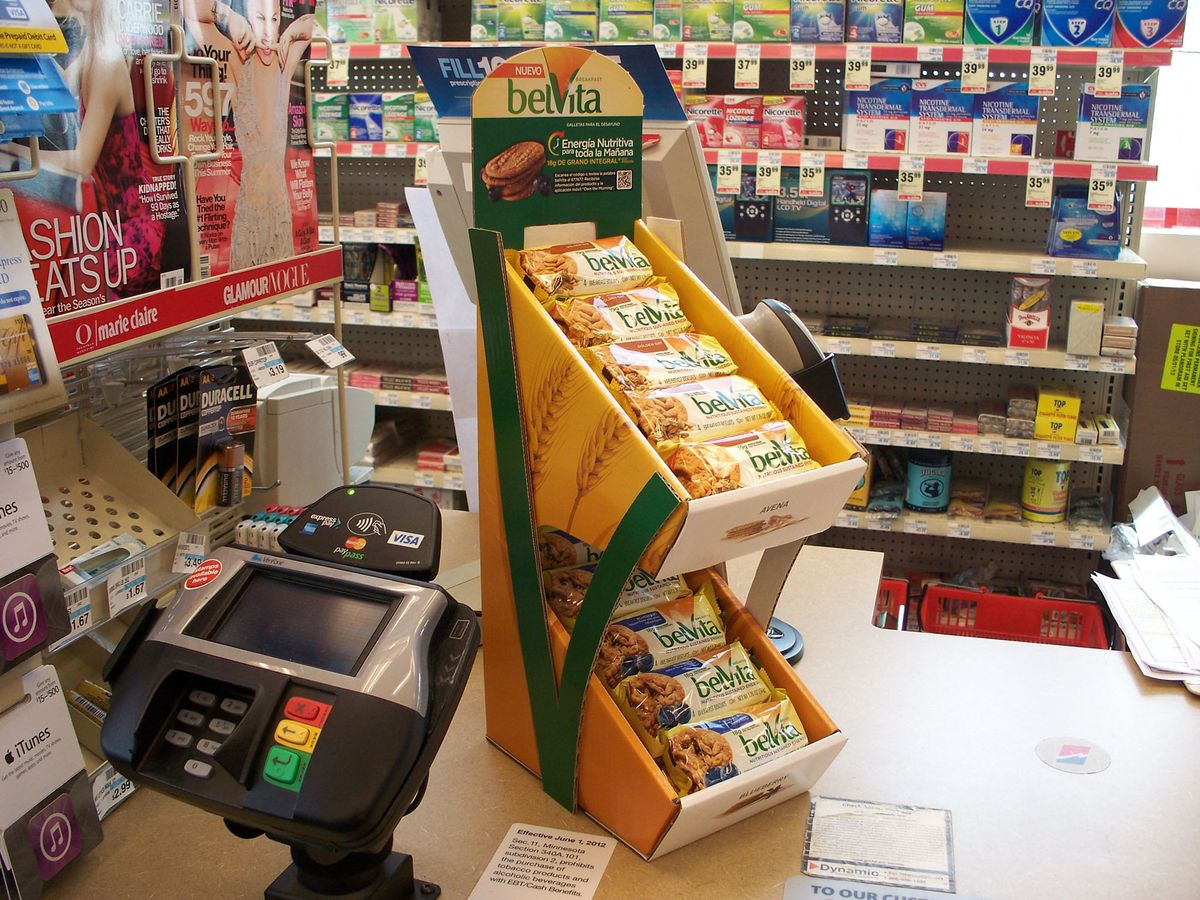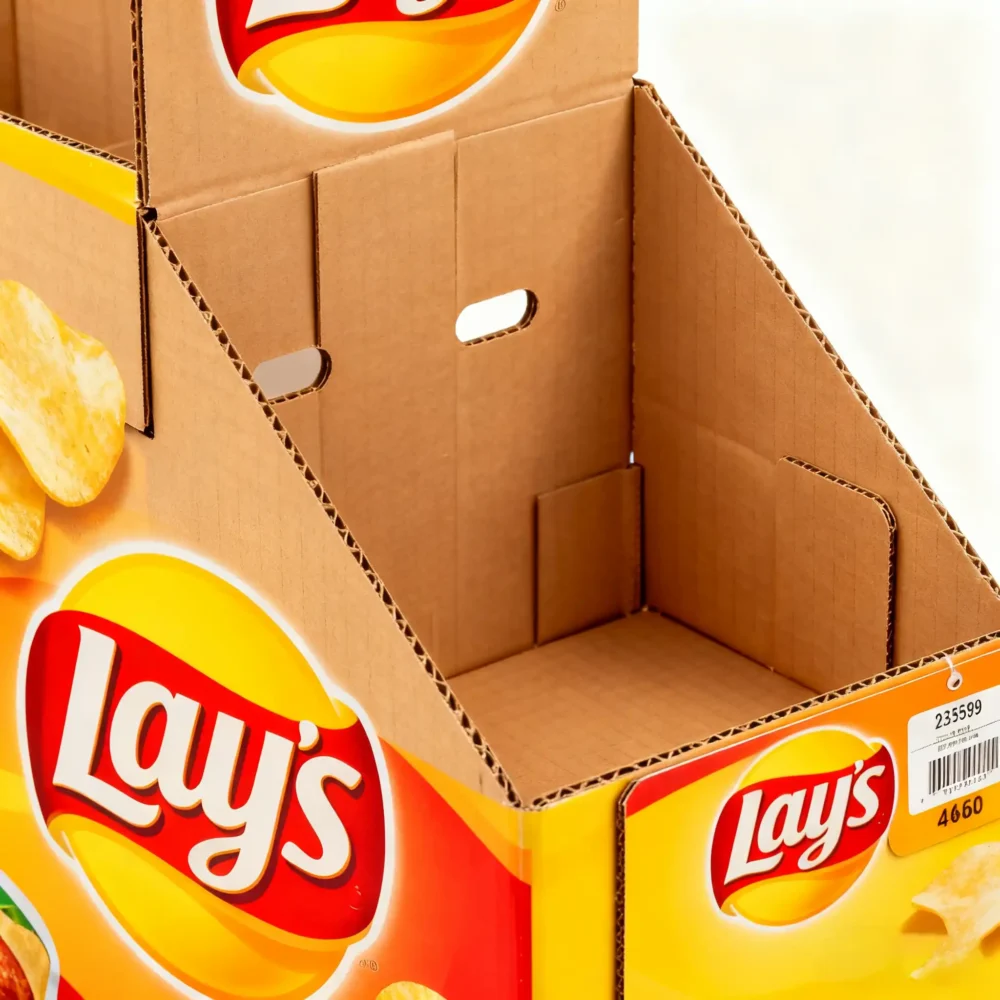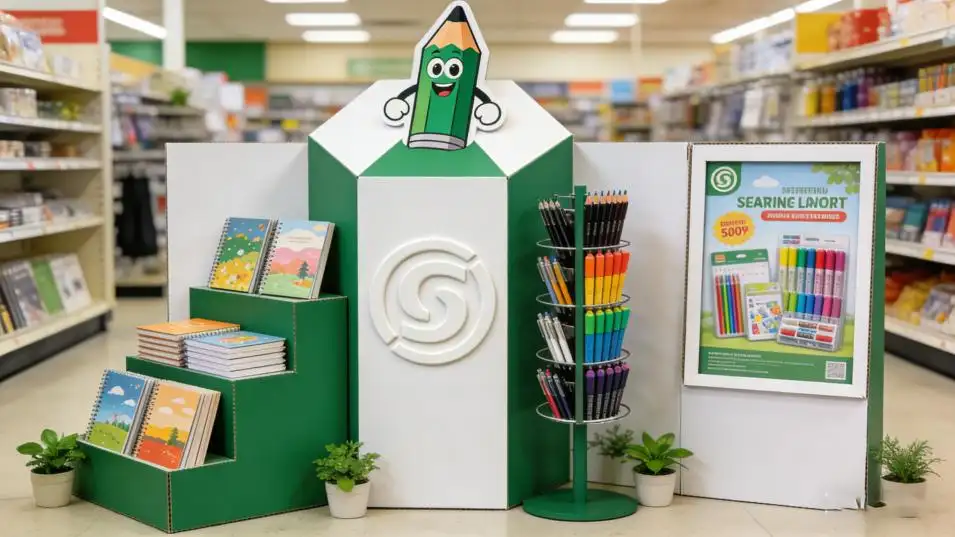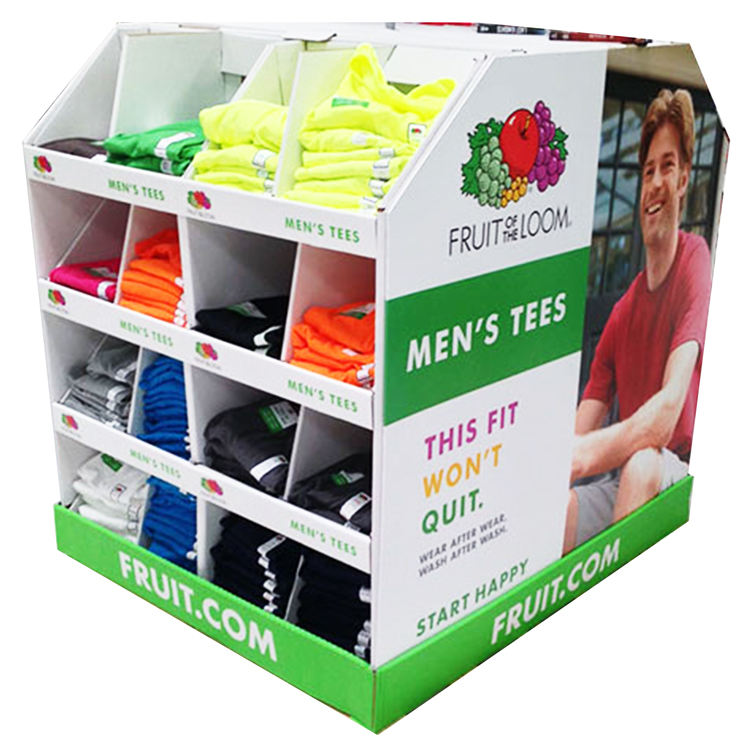The secrets behind those yellow bags you can't resist grabbing at the checkout counter.

Introduction: The Snack Aisle Battlefield
Walk into any supermarket, and you're entering a battlefield. Thousands of products are fighting for a few seconds of your attention. In the snack aisle, this war for visibility is even more intense. So, how does a global giant like Lay's not only win this battle but consistently dominate it, making you grab a bag of chips you hadn't planned on buying?
Their secret weapon is often hiding in plain sight: the humble cardboard display.
This isn't just a story about potato chips. This is a case study on the psychology of impulse buying and the incredible power of strategic Point of Purchase (POP) design. We're going to break down exactly how Lay's uses this simple tool to dramatically increase sales, and more importantly, how you can apply the same winning principles to your own products.
The Challenge: Breaking Through the "Sea of Sameness"
Even for a brand as massive as Lay's, challenges exist:
- A Crowded Marketplace: The snack aisle is filled with hundreds of competing brands, colors, and promotions. It's easy for shoppers to become "banner blind" and stick to their shopping list.
- Fixed Shopping Patterns: Most shoppers follow a routine path through the store. If your product is only in its designated aisle, you miss countless opportunities to engage with them elsewhere.
- The Impulse Buy Imperative: A significant portion of snack sales are unplanned, impulse purchases. Lay's' core challenge was to find a way to interrupt the shopper's journey and trigger that "I want it now" moment, right when they are most likely to act.
Their goal was clear: Escape the confines of the snack aisle and capture the customer's attention at critical decision-making points throughout the store.
The Solution: The Strategic Cardboard Display
Lay's’ solution wasn't just to use any display; it was to deploy a highly strategic, psychologically-driven POP display. Here’s a breakdown of the key elements that make it so effective:

1. Strategic Placement: The Power of Interruption
The number one rule of Lay's' display strategy is location, location, location. They place their displays in the highest traffic areas of a store:
- End-Caps: These are the "billboards" of the supermarket aisles, visible from main walkways.
- Checkout Lanes: This is the final frontier for impulse buys, where shoppers are waiting and most susceptible to a last-minute treat.
- Near the Deli or Soda Aisle: They place chips where customers are already thinking about complementary items (sandwiches, drinks), creating a powerful cross-selling opportunity.
This strategy physically intercepts customers, breaking their routine and putting the product directly in their path.
2. Bold, Unmistakable Branding
A Lay's display is a beacon of yellow. They leverage their iconic brand color to be instantly recognizable from a distance. The logo is huge, and the graphics are clean and simple. There's no confusion about what's being sold. This powerful visual consistency builds trust and triggers instant brand recall.
3. The Psychology of Abundance & Accessibility
The displays are almost always overflowing with product. This isn't just about holding inventory; it creates a psychological effect:
- Abundance Signals Popularity: A full display suggests the product is fresh, popular, and a "safe" choice that others are buying.
- Easy to Grab: The structure is intentionally open and accessible. There are no doors or complicated shelves. Shoppers can effortlessly reach out and grab a bag, reducing any friction to purchase.
4. Clear, Simple Messaging (The CTA)
You won't find long paragraphs of text on a Lay's display. The message is always direct and focused on a single call to action (CTA):
- "New Flavor!"
- "2 for $5"
- "Family Size"
This clarity is crucial. A shopper making a split-second decision doesn't have time to read. They need a simple, compelling reason to buy now.
The Results: A Masterclass in Driving Sales
By implementing this multi-faceted strategy, Lay's achieved phenomenal results that have become a textbook example in retail marketing. The impact was clear:
- Dramatic Increase in Impulse Buys: Reports and industry analysis consistently show that well-placed displays like these can as much as double the rate of impulse purchases compared to products left on the main shelf.
- Massive Brand Visibility: The displays act as mini-billboards throughout the store, reinforcing the Lay's brand far beyond the snack aisle and keeping it top-of-mind.
- Increased Retailer Satisfaction: Retailers love these displays. They are lightweight, arrive flat-packed, are incredibly easy to set up (often pre-packed with product), and most importantly, they drive sales and increase the basket size of their customers. It's a win-win.
Key Takeaways: How You Can Apply Lay's' Strategy
You don't need a multi-million dollar marketing budget to replicate Lay's' success. The principles are scalable and applicable to any brand.
- Think Beyond the Shelf: Where else in a store could your product live? Identify high-traffic "interruption points" relevant to your product.
- Make Your Brand the Hero: Use your display's "real estate" to showcase your brand colors and logo boldly. Make it instantly recognizable.
- Design for the Impulse: Ensure your display structure is open, inviting, and makes it incredibly easy for a customer to grab your product.
- Have a Singular, Clear Message: Decide on the ONE thing you want the customer to do (e.g., "Try Our New Scent," "Get 10% Off," "Perfect for Parties") and make that your headline.
Your Turn to Capture the Impulse Buy
The Lay's case study proves that a cardboard display is not a cost; it is a high-ROI sales machine. It’s a strategic tool that, when designed and deployed correctly, can fundamentally change your sales trajectory in a retail environment.
If you're ready to take your product out of the crowded aisle and put it directly in the hands of eager customers, it's time to think strategically about your own custom display.
Ready to design a display that gets results?
We specialize in creating custom cardboard displays that are engineered to sell. We'll help you apply the same principles used by giants like Lay's to your unique brand and product.
Click Here to Schedule a Free Consultation & Get a Quote
Let's discuss how we can build your silent salesperson and start boosting your sales today.





